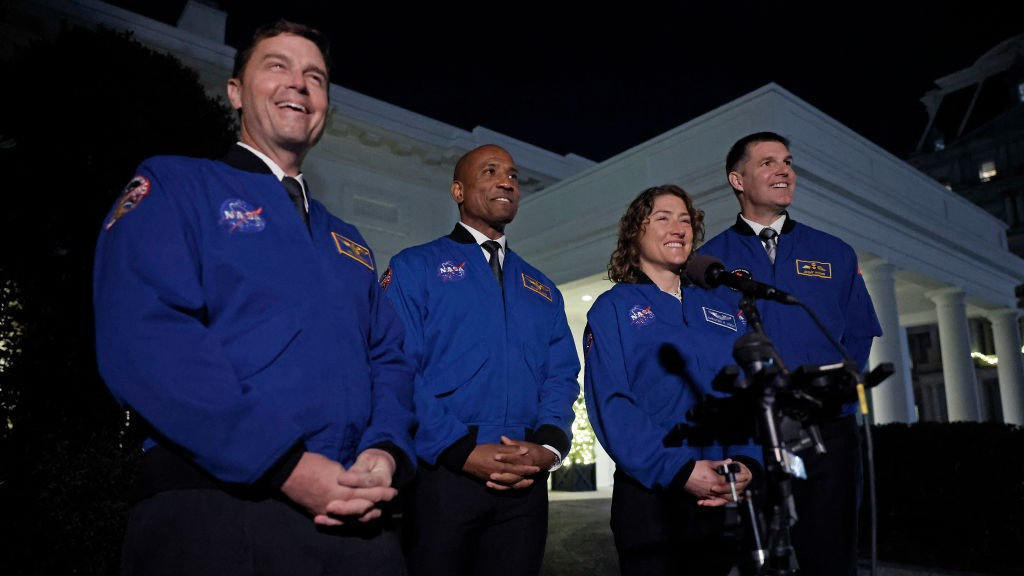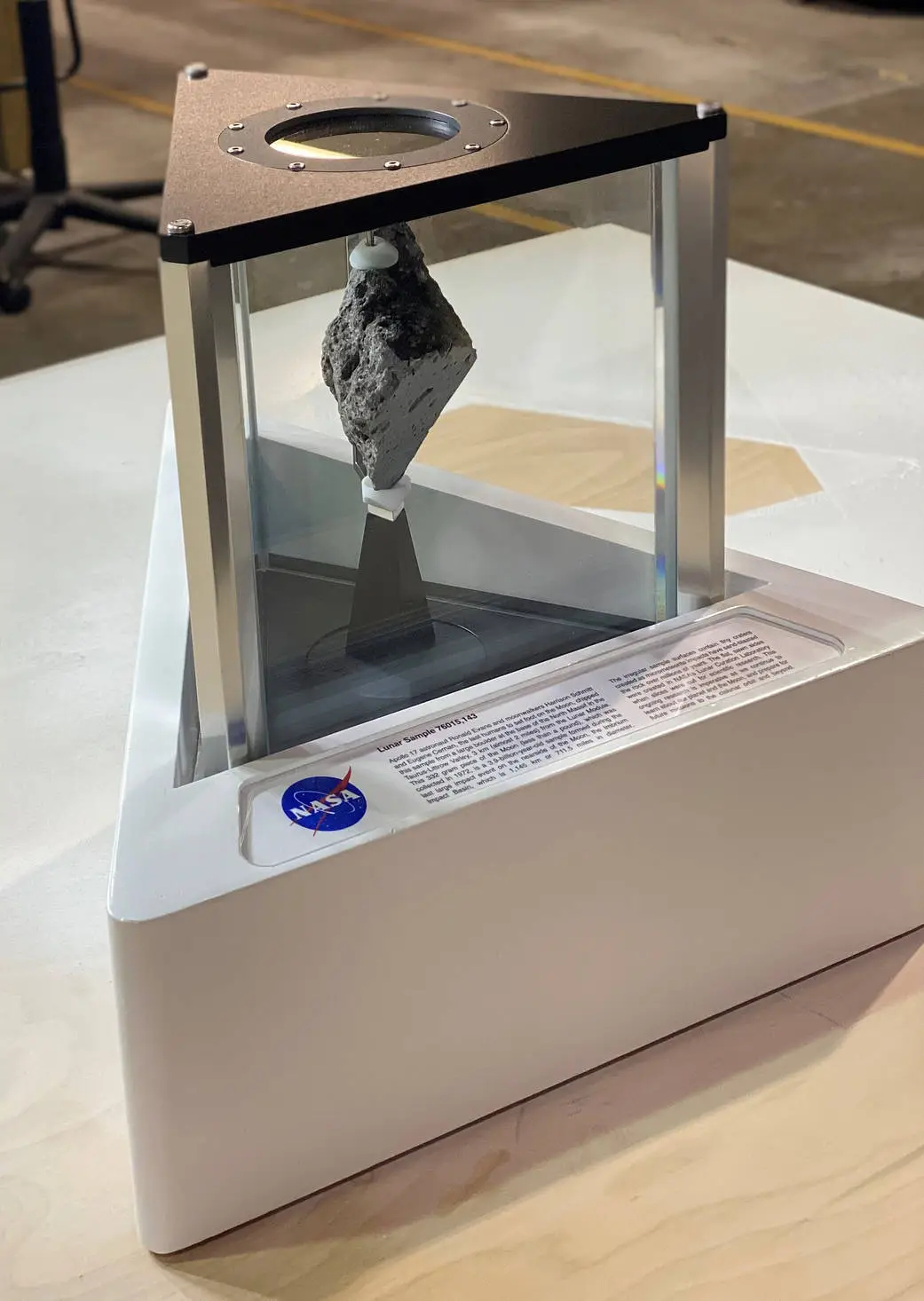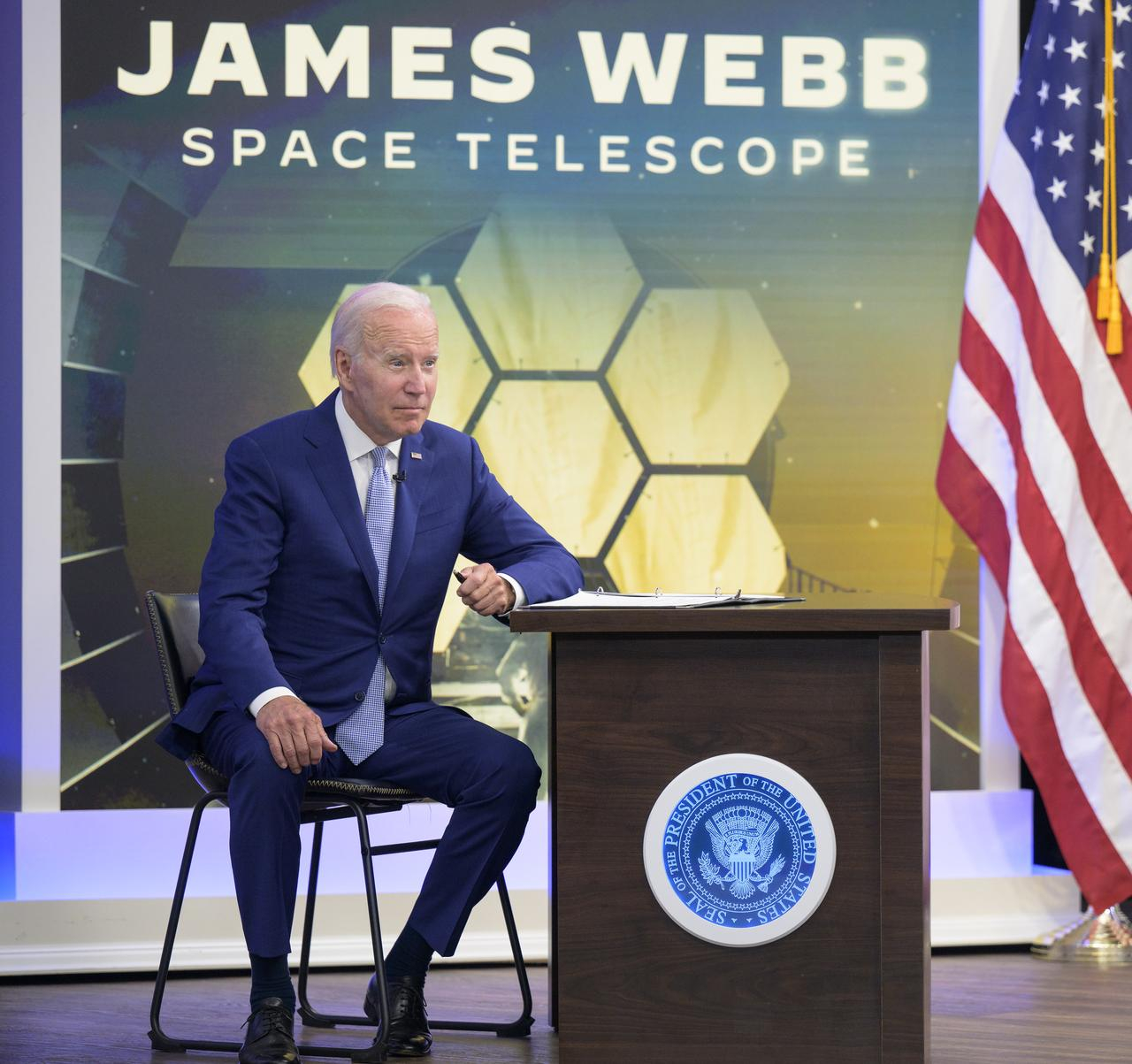Artemis 2 astronauts meet President Biden to talk America's next trip to the moon
The crew also met with Vice-President Kamala Harris days before the next National Space Council meeting.

NASA's next moon astronauts quietly met with U.S. President Joe Biden on Thursday (Dec. 14).
The presidential meeting with astronauts was not announced ahead of time, but the Artemis 2 crew led by NASA later gathered with a group outside the White House to talk about the support Biden is offering for the historic mission, the first to fly to the moon with humans since 1972.
Artemis 2 is expected to fly around the moon in late 2024, but NASA astronaut and commander Reid Wiseman said safety will come before any planned timeline. "As the crew, we don't even think about the date," Wiseman said in the gaggle with reporters, according to ABC News. "We will go when NASA and the vehicle are ready to fly."
Related: Why Artemis 2 moon launch with astronauts is different from Artemis 1
Neither NASA nor the White House announced the Dec. 14 event with the Artemis 2 astronauts ahead of time, including on the President's daily schedule. But photos of the crew with Biden will be available once the White House is ready, NASA officials told SpacePolicyOnline.com on Thursday. (Biden first invited the crew to the White House in a phone call, shortly after their April 3 assignment to the mission at a large ceremony at Houston's Ellington Field.)
The crew talked to Biden "about their training and science plans for the mission, set to launch in late 2024," according to a small update on NASA HQ Photo's X account (formerly Twitter). Aside from Wiseman, the Artemis 2 astronauts include NASA pilot Victor Glover (the first person of color to leave low Earth orbit), NASA mission specialist Christina Koch (the first woman) and Canadian Space Agency mission specialist Jeremy Hansen (the first non-American).
The Biden administration requested $27.2 billion for NASA in the White House's 2024 budget request in March. That budget is still being reviewed by Congress. The 2024 NASA request is $1.8 billion more than 2023 spending levels, or a 7% increase. But the space agency's overall share of the overall projected $6.8 trillion U.S. federal budget is very tiny.
Get the Space.com Newsletter
Breaking space news, the latest updates on rocket launches, skywatching events and more!
Related: NASA's Artemis moon rocket will cost $6 billion more than planned: report

For Artemis, the proposed budget gave NASA $8.1 billion in fiscal year 2024, a $500 million increase over 2023. (The fiscal year began on Oct. 1 and for the time being, NASA is running under a continuing resolution at 2023 spending levels through Feb. 2, 2024.)
"The budget fully funds the rockets, crew vehicle, lunar landers, spacesuits and other systems needed to fly astronauts around the moon on the Artemis 2 mission and then land astronauts — including the first woman, first person of color and first astronauts from another nation — on subsequent Artemis missions on the lunar surface as America begins development of a lunar outpost and aims toward the eventual exploration of Mars," White House officials wrote in the 182-page budget request, which you can read here.
At the White House, Koch told reporters that Biden evoked a famous September 1962 speech about moon exploration by U.S. President John F. Kennedy, delivered at Rice University in Houston — a relatively short commute from NASA's Johnson Space Center in the suburbs.
In the speech, delivered during the height of the Cold War, Kennedy said "we choose to go to the moon … that challenge is one that we are willing to accept, one we are unwilling to postpone, and one which we intend to win."
That historical reference, Koch said, "shows to me that he [Biden] is committed to the mission that we have, that we are going to show through his leadership that we can do great things."
The crew also met with U.S. Vice-President Kamala Harris, according to Harris' X feed (formerly Twitter). The meeting took place less than a week before the next Dec. 20 meeting of the National Space Council that Harris chairs.
"It's been really nice to shake their hands and tell them [Biden and Harris], 'Thank you for their leadership and making it possible for us to have this amazing journey, ' " Glover told reporters during the gaggle.
Hansen paid tribute to the thousands of individuals helping the Artemis 2 crew during their complex, 18-month "development mission" training, meaning they are formulating procedures as they go for themselves and future Artemis crews. "It takes a huge team of people to put four humans ... to sling them around the moon and back, and still have them breathing when they hit the Pacific," he said. The CSA astronaut, incidentally, has been working with senior policymakers in Canada for many years now in informing the direction for space exploration in his home country.
Related: Artemis 2 moon astronaut says crew is ready for ambitious 2024 mission

In Biden's Oval Office is a sample from the last lunar touchdown with humans: Apollo 17 in 1972. The 0.3 pound (332-gram) moon rock, labeled Lunar Sample 76015,143, is on loan from NASA and is roughly 3.9 billion years old, close to the formation date of our solar system.
Artemis 2 is the first human mission of the greater Artemis program that aims to put humans on the moon with Artemis 3 as soon as 2025, pending the readiness of items such as the SpaceX Starship lander and the privately made spacesuits. (NASA's Government Accountability Office suggests a more realistic timeline for the landing may be 2027.) Artemis 2 follows after Artemis 1, an uncrewed mission that successfully tested NASA's Orion spacecraft and the agency's Space Launch System rocket on a round-the-moon effort in late 2022.

The previous generation of astronauts who went to the moon under the Apollo program did so between 1968 and 1972. Six of those missions landed on the moon, starting with Apollo 11 in 1969, while three other missions either orbited the moon or flew around it.
While NASA mostly did the Apollo missions on its own, Artemis is an internationally funded affair being administered under the NASA-led Artemis Accords. The coalition of 30-plus partners commit to U.S.-led policy direction in space, with a subset of them offering hardware in exchange for seats on missions. Canada's robotic Canadarm3 contribution for NASA's Gateway station, for example, paid for Hansen's seat.
The Artemis program was initialized in 2019 under the Trump administration, which said the U.S. needs to display space leadership there amid a new "space race" with China and Russia. (Trump aimed to put boots on the moon in 2024, but as is normal with large space development projects, the first human landing mission will be delayed at least a year if not more.)
Russia and China, in the interim, have created their own lunar-facing alliance with countries such as Belarus. Russia remains one of the largest partners in the International Space Station for now, although other space projects with ISS partners were severed after the ongoing invasion of Ukraine in February 2022.
Join our Space Forums to keep talking space on the latest missions, night sky and more! And if you have a news tip, correction or comment, let us know at: community@space.com.

Elizabeth Howell (she/her), Ph.D., was a staff writer in the spaceflight channel between 2022 and 2024 specializing in Canadian space news. She was contributing writer for Space.com for 10 years from 2012 to 2024. Elizabeth's reporting includes multiple exclusives with the White House, leading world coverage about a lost-and-found space tomato on the International Space Station, witnessing five human spaceflight launches on two continents, flying parabolic, working inside a spacesuit, and participating in a simulated Mars mission. Her latest book, "Why Am I Taller?" (ECW Press, 2022) is co-written with astronaut Dave Williams.









